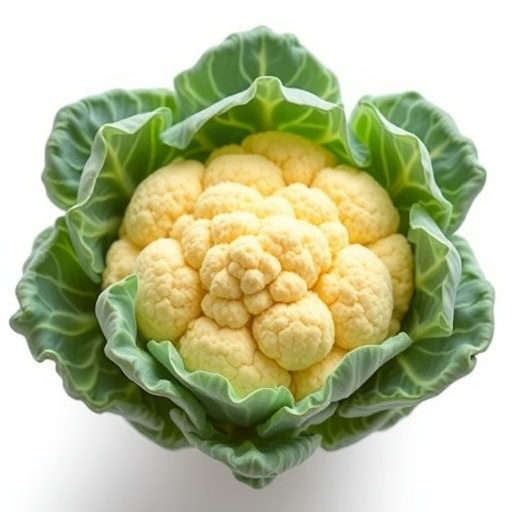In a groundbreaking study published in BMC Genomics, researchers led by a team including Song, M., Shen, Y., and Wang, J. have unveiled an insightful exploration into the BoRR gene family in cauliflower. This research is particularly significant as it shines light on the critical roles that these genes play in both curd development and salt tolerance, two vital aspects for improving crop resilience and agricultural sustainability. The urgency of improving salt tolerance in crops cannot be overstated, given the increasing salinity of soils globally, which poses a serious threat to food security.
The cauliflower plant, a member of the Brassica family, has long been a staple in diets worldwide due to its nutritional value. However, traditional cultivation practices often fall short in the face of environmental stresses, primarily due to changing climate conditions and soil salinity. The identification and understanding of specific gene families like BoRR are crucial to developing new cultivars that can withstand these challenges, thereby ensuring optimal growth and yield under adverse conditions.
The researchers utilized advanced genomic techniques to isolate and characterize the BoRR gene family from cauliflower. Through genomic sequencing and analysis, they were able to map out the specific genes within this family and establish their functional roles. The synergy between this gene family and curd development was a focal point, demonstrating how genetic pathways are intricately linked to the physical formation of the cauliflower curd – a crucial parameter for both aesthetic and culinary purposes.
Interestingly, the BoRR gene family not only influences curd morphology but also plays an essential role in how cauliflower plants respond to salt stress. Salt stress in plants often leads to osmotic stress, affecting their ability to take up water and nutrients. The study findings indicate that certain genes within the BoRR family enhance the plant’s physiological responses to high salinity, thereby improving overall growth and vitality. This dual-function aspect of the gene family is a key takeaway, potentially leading to revolutionary advancements in crop breeding.
By implementing artificial intelligence and bioinformatics analysis alongside traditional genetic studies, the researchers have laid a formidable foundation for future explorations in plant genetics. The role of bioinformatics cannot be understated in this context as it provides a toolkit for deciphering complex genetic interactions and allows scientists to simulate various environmental stresses in a controlled setting. This technological integration has expanded the horizons of plant science, enabling unprecedented advancements in the understanding of stress-related genes.
The implications of this research extend beyond cauliflower alone. The findings pave the way for improving other crops within the Brassica family and potentially other agricultural species. The genetic insights gleaned from the BoRR gene family could serve as a template for engineering salt-tolerant varieties of critical crops such as broccoli, cabbage, and mustard. This intersection of genetics and agriculture holds promise for revolutionizing farming practices in regions severely affected by salinity and climate change.
Furthermore, the research contributes to the burgeoning discourse on sustainable agriculture by proposing genetic solutions to environmental challenges. With the world rapidly approaching a tipping point with climate change, the need for sustainable farming practices has never been more pressing. The ability to genetically enhance plants for resilience against environmental stresses like salt could drastically reduce dependency on chemical interventions, thereby promoting more holistic farming methodologies.
The collaboration among researchers in this study highlights the importance of multidisciplinary approaches in scientific research. By bringing together experts in genomics, plant biology, and agricultural sciences, the study encapsulates the essence of modern scientific inquiry, which often transcends traditional disciplinary boundaries. This collaborative spirit is essential for tackling complex global issues such as food insecurity and climate change, as it fosters innovation and the sharing of diverse perspectives.
Moreover, the exploration of the BoRR gene family offers a glimpse into the future of plant biotechnology. As researchers continue to uncover the genetic underpinnings of plant traits, the potential for developing genetically engineered crops tailored for specific environments becomes increasingly feasible. This evolution in biotechnology empowers farmers with tools designed to enhance crop yield and quality while mitigating the adverse effects of climate-induced challenges.
As discussions surrounding genetically modified organisms (GMOs) continue to spark debate, research such as this serves an essential role in informing the public about the science behind genetic modifications. By revealing the mechanisms by which specific gene families operate, scientists can address concerns regarding genetic interventions and demonstrate their necessity in maintaining food systems amidst mounting agricultural pressures.
In conclusion, the identification of the BoRR gene family in cauliflower not only sheds light on the genetic complexities of curd development and salt tolerance but also emphasizes the broader implications for agricultural sustainability. The integration of advanced genomic techniques, combined with collaborative interdisciplinary research, showcases the possibilities that lie ahead in plant genetics. As scientists continue to unravel the genetic codes of our most vital crops, a brighter, more resilient agricultural future can be envisioned.
In a world where the stakes for food security have never been higher, the findings from this study serve as a clarion call for the scientific community and agricultural stakeholders alike. The marriage of genetics and agriculture, exemplified by the discoveries surrounding the BoRR gene family, will undoubtedly play a pivotal role in shaping the future of food production.
Subject of Research: The BoRR gene family in cauliflower and its role in curd development and salt tolerance.
Article Title: Identification of BoRR gene family in cauliflower: roles in curd development and salt tolerance.
Article References:
Song, M., Shen, Y., Wang, J. et al. Identification of BoRR gene family in cauliflower: roles in curd development and salt tolerance.
BMC Genomics 26, 834 (2025). https://doi.org/10.1186/s12864-025-12005-x
Image Credits: AI Generated
DOI: 10.1186/s12864-025-12005-x
Keywords: BoRR gene family, cauliflower, curd development, salt tolerance, genomics, plant genetics, agricultural sustainability.




